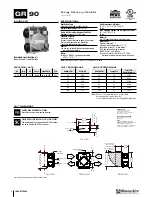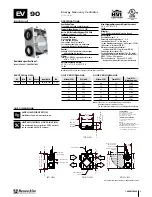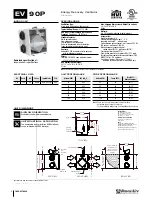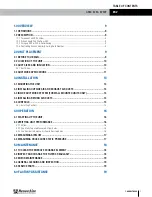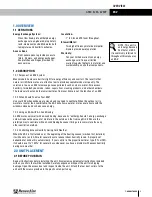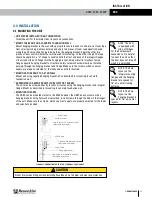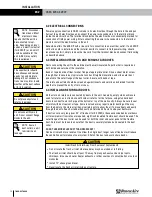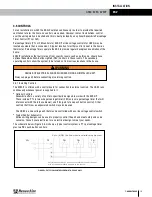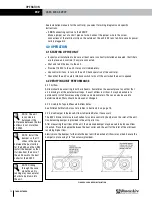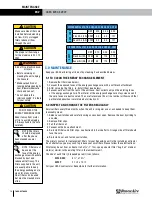
17
1.800.627.4499
GR90, EV90, EV90P
ERV
OPERATION
FIGURE 4.4.0 AIRFLOW DIAGRAM EV90/P
OA
EA
RA
FA
Pressure Ports
(4) Typ.
4.3 MEASURING AIRFLOW
4.3.1 Equipment Required
u
A magnehelic gauge or other device capable of measuring 0–1.0 in. water of differential
pressure.
u
2 pieces of natural rubber latex tubing, 1/8" ID, 1/16" Wall works the best.
NOTE: Be sure to
remove cap from
pressure port
before inserting tubing. In-
sure tubing is well seated
in pressure ports.
NOTE: The tubing
should extend in
the pressure port
approx. 1".
4.4 MEASURING CROSS CORE STATIC PRESSURE
The individual differential static pressures (DP) are measured using the installed pressure ports
located in the front of the units core access doors.
Do not relocate pressure ports.
u
To read SCFM of Fresh Air (FA) install the “high” pressure side (+) of your measuring device
to the Outside Air (OA) port and the “low” pressure side (-) to the Fresh Air (FA) port.
u
To read SCFM of Room Air (RA) install the “high” pressure side (+) of your measuring device
to the Room Air (RA) port and the “low” pressure side (-) to the Exhaust Air (EA) port.
u
If gauge drops below zero, reverse tubing connections.
u
Use the reading displayed on your measurement device to cross reference the CFM output
using the conversion chart.
NOTE: These
ports are carefully
located on the unit
to give the most accurate
airflow measurement.
NOTE: Be sure to
replace cap into
pressure port
when airflow measuring is
completed.
NOTE: For best
performance the
airflow rate for
both the Fresh Air and
the Exhaust Air should
be roughly equal (“bal-
anced”). In some facilities
a slight positive or negative
pressure in the building is
desired. RenewAire ERVs
can generally operate with
a flow imbalance of up to
20% without significant
loss in energy recovery
efficiency.
Make sure clean filters are installed before balancing airflow. Dirty or clogged filters reduce
airflow through the unit.
CAUTION


